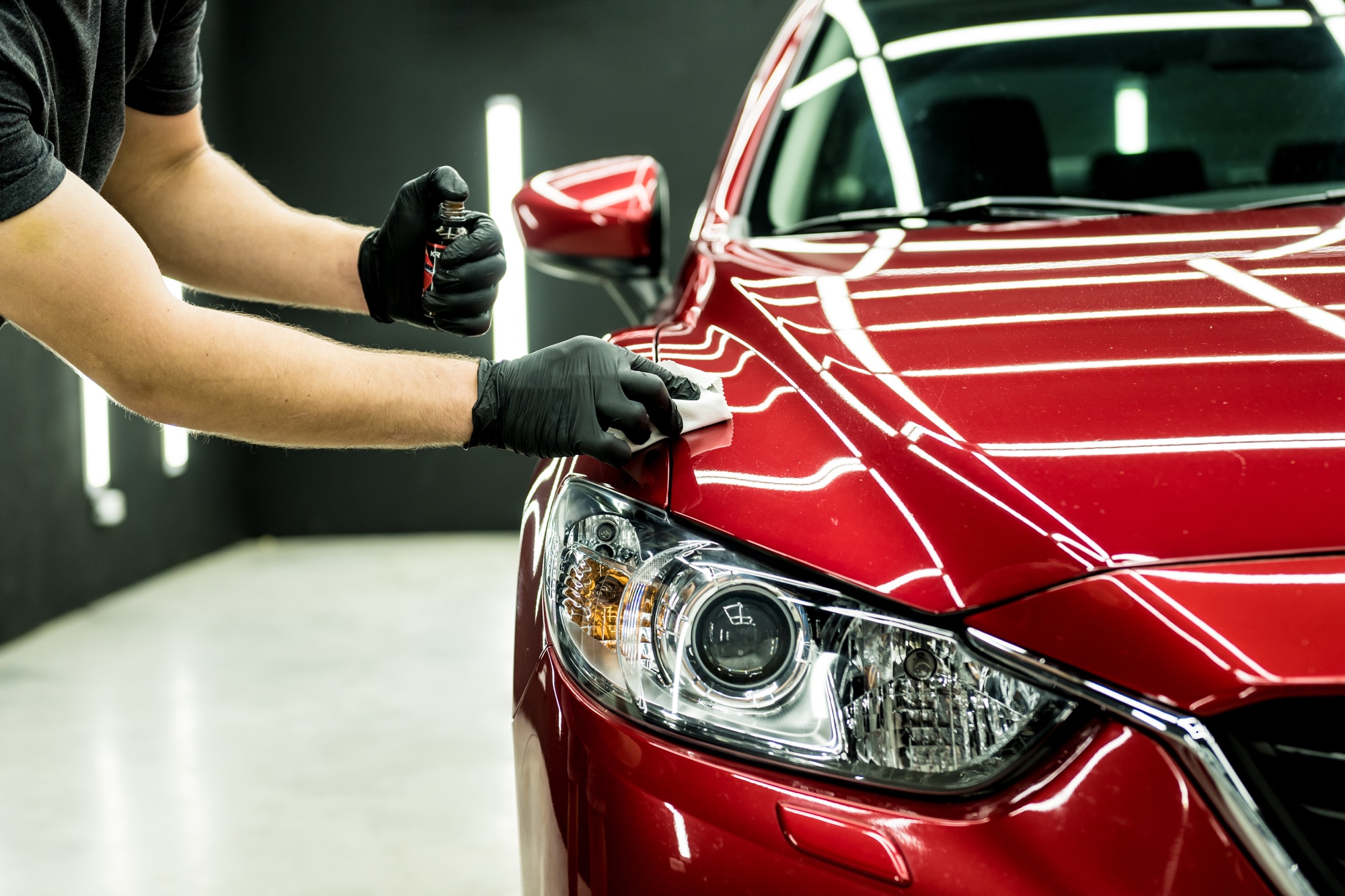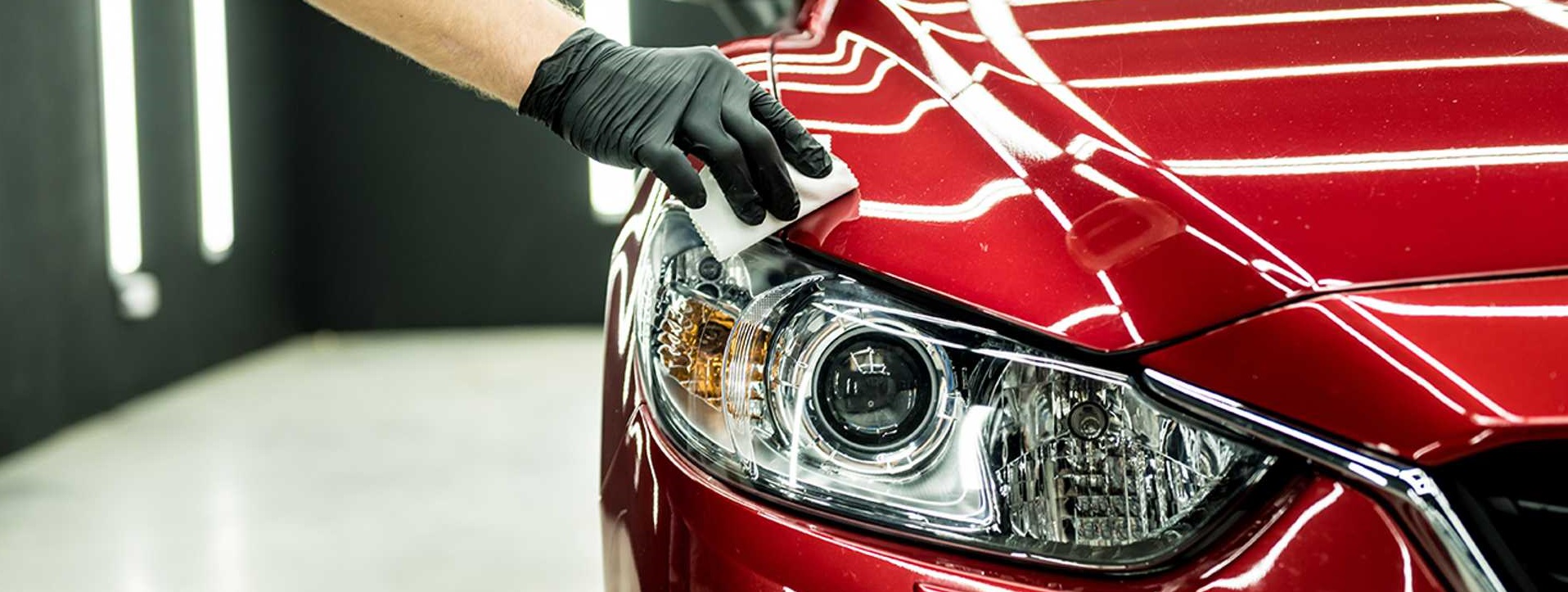Final Touch Auto Works Ceramic Coatings: Your Best Defense Against Environmental Damage
Final Touch Auto Works Ceramic Coatings: Your Best Defense Against Environmental Damage
Blog Article
The Ultimate Guide to Ceramic Coatings: Enhancing Your Automobile's Complete and Sturdiness
Ceramic coatings might be the option you've been looking for if you're looking to boost your car's look and defense. These advanced finishes bond with your automobile's paint, creating a resilient obstacle against ecological damages. Exactly how do they stack up against standard wax? Recognizing the advantages and application procedure can make a considerable distinction in your cars and truck care regimen. Allow's discover what makes ceramic finishings a worthwhile investment for your car.
What Are Ceramic Coatings?
Ceramic layers are advanced protective layers that boost your cars and truck's outside. They're made from a fluid polymer that chemically bonds with your lorry's paint, developing a resilient guard. Unlike conventional wax or sealers, which disappear with time, ceramic finishes give long-lasting defense versus ecological impurities like UV rays, dust, and chemicals.When you use a ceramic covering, you're buying an obstacle that drives away water, making it less complicated to cleanse your automobile and maintaining it looking newer for longer. This modern technology aids protect the integrity of your paint, reducing the danger of scratches and oxidation.Ceramic layers can be found in various solutions, each developed to deal with various demands and preferences. You can select a DIY set or go with professional application, relying on your convenience level and budget. In general, ceramic coatings stand for a sophisticated option for maintaining your automobile's aesthetic charm and durability.
Advantages of Ceramic Coatings
When you purchase a ceramic coating, you reveal a series of benefits that surpass simple appearances. To start with, it supplies remarkable security against environmental contaminants like dirt, bird droppings, and UV rays, maintaining your cars and truck's paint looking new much longer. You'll see that upkeep becomes less complicated, as the hydrophobic residential properties trigger water and gunk to move off effortlessly. This implies less time invested washing and describing your vehicle.Additionally, ceramic coverings can enhance the gloss of your vehicle's coating, providing it that display room sparkle. They also use resistance to scratches and swirl marks, which aids preserve your lorry's resale value. With a ceramic coating, you're not just shielding your investment; you're also improving its general appearance and longevity. Inevitably, this innovative technology assurances your vehicle stands apart while delighting in lasting advantages that traditional waxes merely can't match.
The Application Refine: Just How to Use Ceramic Coatings
Applying a ceramic finish includes numerous vital actions to guarantee perfect results. Initially, thoroughly clean your car to eliminate any kind of dirt, grime, or impurities. This ensures the surface area is tidy and ready for the covering. Next off, sanitize the paint utilizing a clay bar to remove embedded particles. Afterward, evaluate the paint for flaws and polish it to achieve a smooth surface.Once your car's surface is prepped, apply the ceramic covering in tiny areas. Use an applicator pad to spread out the coating equally, complying with the manufacturer's guidelines. Allow the coating to treat for the suggested time, normally between one to 2 hours, depending on the product.Finally, prevent washing your car for a minimum of a week to let the finish bond effectively. Following these actions will certainly aid you accomplish a sturdy, high-gloss finish that shields your cars and truck for several years to come.

Comparing Ceramic Coatings to Standard Wax
After guaranteeing your car's surface area is flawlessly prepped with a ceramic layer, it's time to contemplate exactly how this modern service compares to typical wax. Ceramic coatings provide a robust layer of security that lasts for years, while wax generally provides just a few weeks of shine. You'll notice that ceramic finishings bond with your paint, developing a hydrophobic surface that wards off water and dirt, making upkeep easier.In comparison, traditional wax rests on top of the paint and requires regular reapplication. With ceramic finishings, you obtain premium scrape resistance and UV protection, assisting to avoid fading and oxidation. While the first investment for a ceramic finishing is higher, the lasting benefits frequently outweigh the costs. If you're looking for resilience and improved gloss, ceramic coatings are a clever choice over conventional wax.
Maintenance Tips for Your Ceramic Coated Automobile
To keep your ceramic-coated car looking pristine, routine maintenance is vital. Beginning with a gentle laundry using a pH-balanced hair shampoo; prevent rough detergents that can break down the layer. Make use of a microfiber clean mitt to avoid scratches and always wash completely to get rid of any kind of soap residue.After cleaning, completely dry your auto with a soft microfiber towel to avoid water places. Think about applying a ceramic maintenance spray every couple of months to enhance the layer's hydrophobic residential properties and include an extra layer of protection.It's additionally important to stay clear of automatic car washes with abrasive brushes, as they can harm the covering. Rather, go with hand cleans or touchless clean alternatives. Furthermore, regularly evaluate your car for impurities like tree sap or bird droppings and resolve them without delay to stop etching. Following these tips will help maintain the shine and sturdiness of your ceramic-coated car for years ahead.
Typical Myths About Ceramic Coatings
In spite of the impressive benefits of ceramic finishes, a number of misconceptions can create complication for auto owners. One usual misconception is that ceramic finishings remove the demand for upkeep. While they do offer enhanced protection, normal washing and treatment are still vital to maintain that high-gloss finish.Another myth is that these coatings are scratch-proof. While they supply a solid layer of protection against minor scrapes, they can't stand up to extreme impacts or rough materials.Many additionally think that ceramic finishings will certainly make their vehicles immune to all pollutants. In truth, they repel dirt and water but won't stop issues like bird droppings or tree sap from creating damages if left unattended.Lastly, some believe that using ceramic coverings is a DIY job any individual can take care of, however achieving a perfect application commonly requires professional experience to assure peak outcomes.
Choosing the Right Ceramic Finish for Your Automobile
Exactly how do you choose the appropriate ceramic finish for your vehicle? Begin by considering the degree of security you require. If your vehicle deals with extreme weather condition or frequent roadway journeys, go with a premium finish that supplies superior resilience and resistance to scratches, UV rays, and page chemical stains.Next, consider the application approach. Some coatings require specialist setup, while others are DIY-friendly. If you're experienced, a do it yourself item may conserve you money, however, for the best outcomes, a specialist can ensure appropriate application.Don' t fail to remember to check the long life of the coating. Some last a couple investigate this site of years, while others can shield for a decade or more. Review reviews and testimonials to gauge customer satisfaction. By evaluating these factors, you'll find a ceramic covering that not only improves your auto's appearance but also offers lasting defense.
Frequently Asked Inquiries
The Length Of Time Do Ceramic Coatings Last usually?
Ceramic coverings typically last anywhere from 2 to 5 years, depending on variables like application, maintenance, and environmental conditions. You'll desire to comply with correct treatment regimens to maximize their longevity and effectiveness.
Can Porcelain Coatings Be Applied Over Paint Scratches?
You can't apply ceramic finishes over paint scrapes successfully. It's best to fix any type of scratches initially, making certain a smooth surface area - Final Touch Auto Works Ceramic Coatings. By doing this, the coating bonds properly and offers suitable protection for your car's coating
Are Ceramic Coatings Safe for All Car Surface areas?
Ceramic finishings are generally safe for most auto surfaces, consisting of paint, glass, and wheels. It is essential to examine details product standards, as some coatings could not be appropriate for particular materials or coatings.
Will Ceramic Coatings Protect Against UV Damages?

Can I Do Touch-Ups on Ceramic Coated Surface Areas?
You can do touch-ups on ceramic coated surface areas, yet it's important to make use of suitable products. Confirm the area is clean and adhere to proper application methods to maintain the coating's honesty and efficiency. Unlike traditional wax or sealers, which put on off over time, ceramic finishes offer long-lasting security against ecological impurities like UV rays, dust, and chemicals.When you apply a ceramic coating, you're investing in an obstacle that wards off water, making it simpler to cleanse your car and keeping it looking more recent for Clicking Here longer (Final Touch Auto Works Ceramic Coatings). Later, inspect the paint for imperfections and brighten it to attain a smooth surface.Once your auto's surface is prepped, apply the ceramic finishing in tiny sections. Enable the layer to heal for the advised time, commonly between one to two hours, depending on the product.Finally, stay clear of washing your car for at the very least a week to let the finishing bond correctly. Think about applying a ceramic upkeep spray every few months to boost the finish's hydrophobic properties and include an additional layer of protection.It's also smart to prevent automated cars and truck cleans with rough brushes, as they can damage the coating. Ceramic finishes are generally secure for most cars and truck surface areas, including paint, glass, and wheels
Report this page